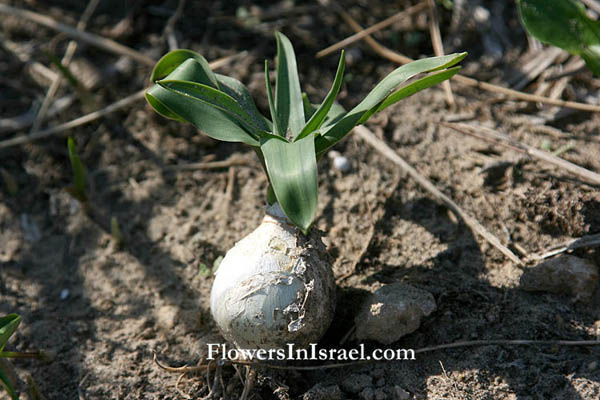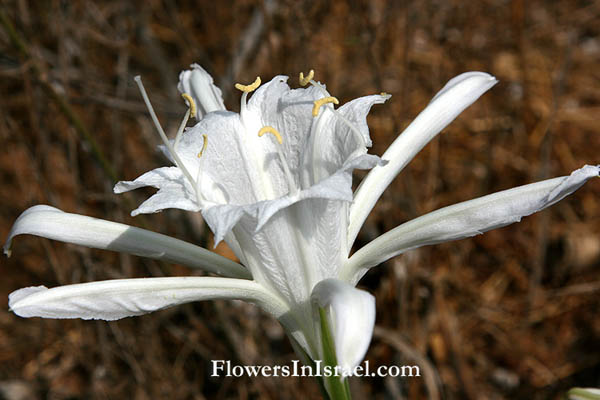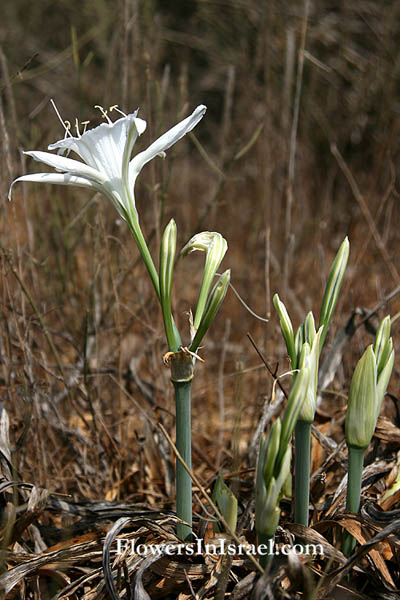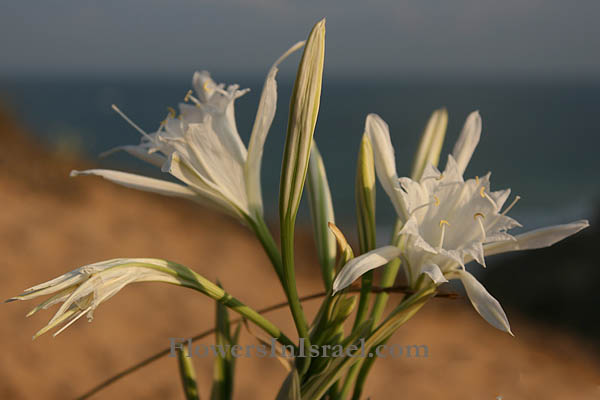Hebrew: חבצלת החוף, Arabic: نرجس بحري
| Scientific name: | Pancratium maritimum L. | |
| Common name: | Sea daffodil, Sea pancratium lily | |
| Hebrew name: | חבצלת החוף | |
| Arabic name: | نرجس بحري | |
| Family: | Amaryllidaceae, נרקיסיים |

|
| Life form: | Geophyte, bulbous perennial | |
| Stems: | Up to 40 cm high | |
| Leaves: | Rosette, entire, glaucos, appearing before anthesis | |
| Inflorescence: | 3-15 flowers in an umbel | |
| Flowers: | White, 10-15cm; perianth-segments 30-50mm, linear-lanceolate, shorter than hypanthial tube; and less than twice as long as corona; margin with 12 triangular teeth | |
| Fruits / pods: | Capsule subglobose | |
| Flowering Period: | August, September, October | |
| Habitat: | Mediterranean strand | |
| Distribution: | Mediterranean Woodlands and Shrublands | |
| Chorotype: | Mediterranean | |
| Summer shedding: | Ephemeral |

Derivation of the botanical name: Pancratium, pan, "all"; krotion, "power"; means the 'all-powerful,' like Jesus as the Pankrator in Byzantine art. Pantokrator was used to translate the Hebrew title El Shaddai. maritimum, "coastal." The Hebrew name for the flower is חבצלת החוף (Chavazelet Hachof), and it is also generally accepted, that the Rose of Sharon (shoshan, חבצלת השרון, Chavazelet Hasharon), mentioned in the Song of Solomon (Song of Songs 2:1-2), is identified with the Pancratium maritimum, but without justification.
This species became rare because of destruction of the coast by urbanism. The Pancratium species are toxic plants! The bulbs contain more than 20 alkaloids and some other substances (lectine...). There were ethnobotanical and/or medicinal uses with Pancatium: Pancratium maritimum has anti-fungal activity. The "Rose of Sharon" blooms in the spring of the year and the Pancratium maritimum blooms in August, September and October. According to Michael Zohary, Plants of the Bible, the Pancratium maritimum and the Narcissus are considered by some to be the biblical lily (shoshan), but without justification. Bible resources:


Location: Nof Yam coast 
Location: Herzliya coast |